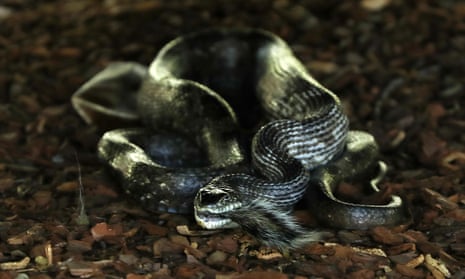Climate warming and the expansion of human settlements across the southern states of the US has led to a dramatic increase in the number of people bitten during encounters with venomous snakes, according to a report by the Wall Street Journal.
The increase in bites is on track to break records in North Carolina, Georgia and Texas where copperhead snakes are the dominant species, with a total of 2,118 bites, an increase of 83 over the previous year, the newspaper said. In Florida, where the eastern coral snake and the cottonmouth are common, numbers remain average.
Venomous snakebites are up more than 10% this year in North Carolina and Georgia, both states where bites have been increasing for several years. In May and June, there were 415 reported snakebites in Texas, an increase of 27% over the same period five years ago.
According to a 2016 study of pediatric snakebites, about 1,300 bites are reported involving minors each year, though that is a fraction of the estimated total number of snakebites, which the Centers for Disease Control and Prevention estimates at 7,000-8,000.
Experts noted that the majority of bites are occurring in fast-growing suburbs of cities like Raleigh, Atlanta and Dallas, suggesting that newcomers unaccustomed to living in the south are disturbing snakes living in what was once forest or farmland.
“There’s no question as we build out more, we’re definitely inhabiting the areas where snakes reside,” Gaylord Lopez, managing director of the Georgia Poison Center, told the Journal.
For reasons that scientists do not fully understand, rainfall often plays a part in increased snake activity. Last winter’s record-setting rainfall, attributed in part to climate warming, may also be behind the increase in bites.
